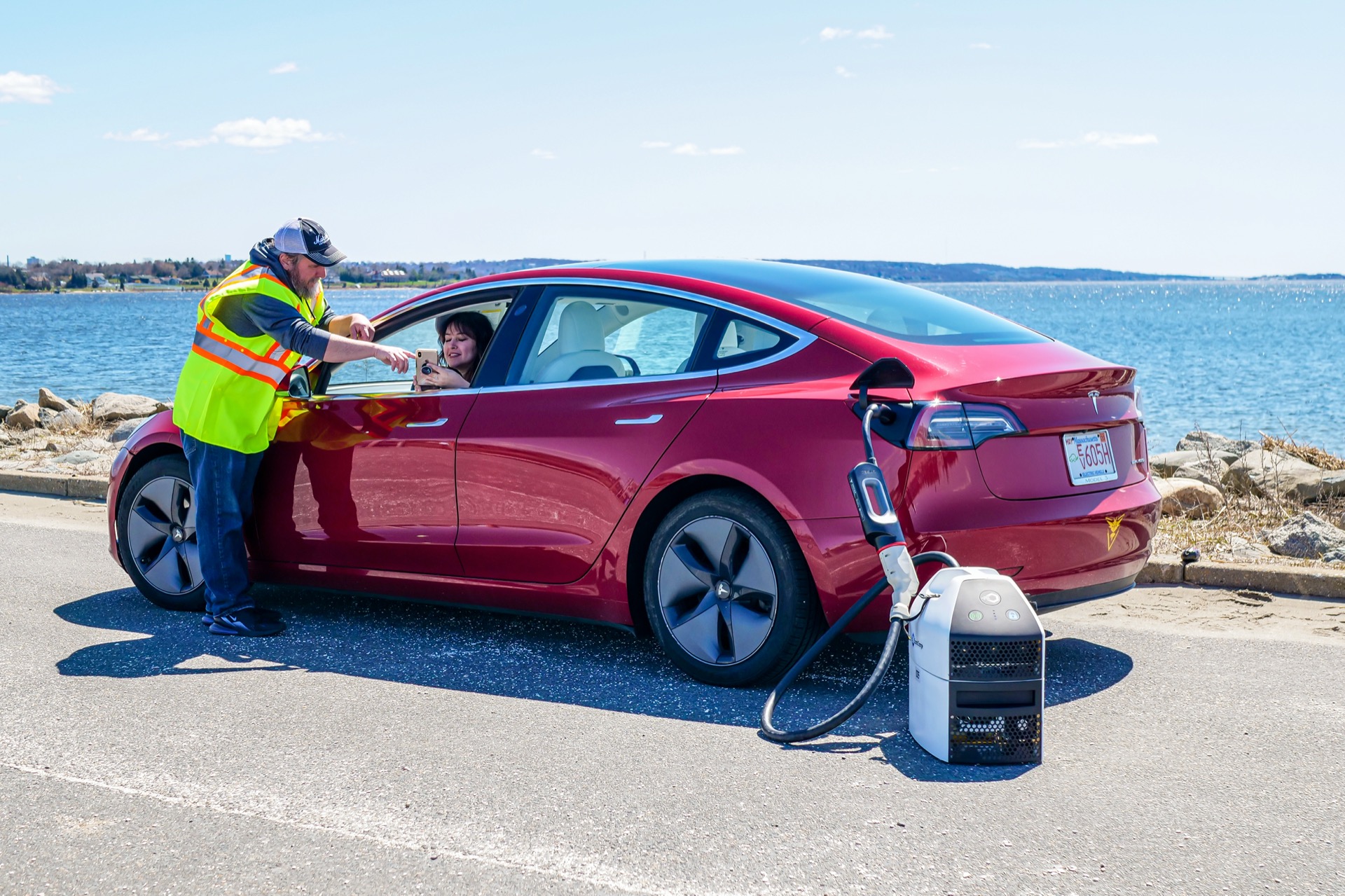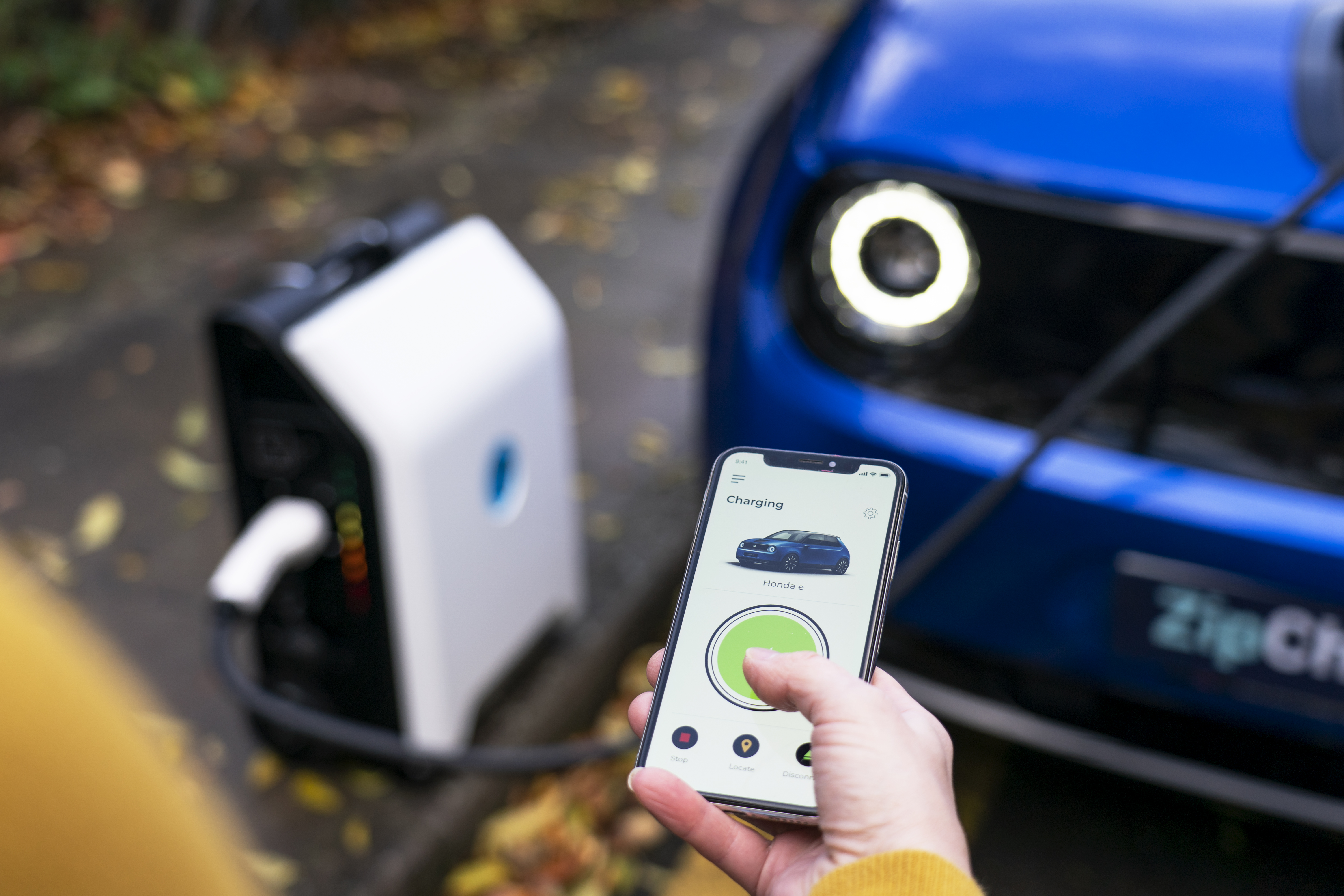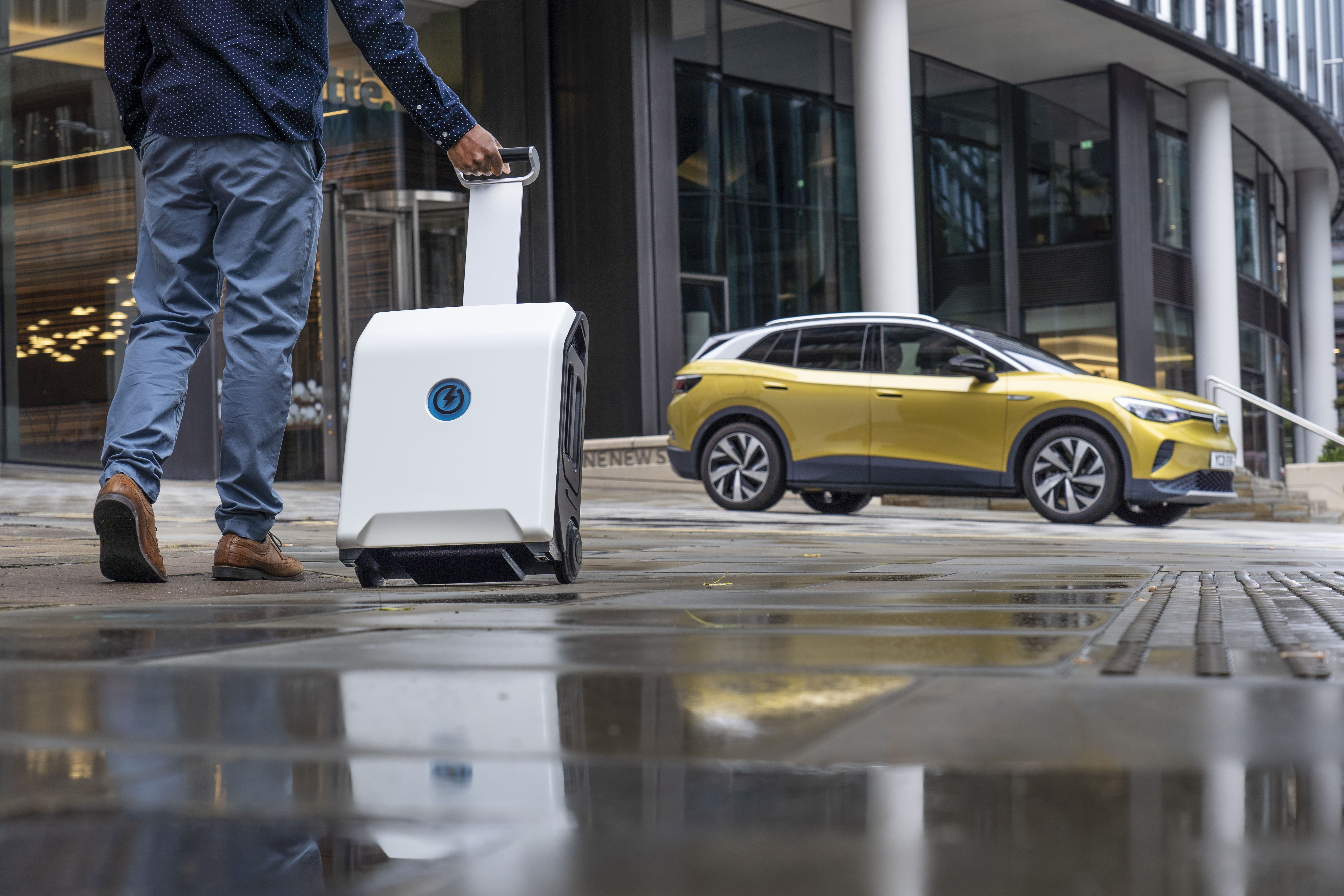Seek an EV charge point or let the power come to you
One of the biggest areas of concern around electric vehicles (EVs) is the achievable range between charges. Although each journey is short, not being able to charge on longer journeys or in more remote areas is seen as hampering EV adoption. Some start-up companies are tackling this with portable power business models, writes Caroline Hayes.
Range anxiety is cited as one of the most important issue for satisfaction among electric vehicle (EV) owners. This has led to investment in the charging infrastructure in countries in Europe, North America and Asia.
This takes a concerted effort and considerable financial investment by governments and private companies. In addition to a nation- or region-side charging network, some companies are looking at a portable option, which brings the charger to the car.
At COP26, in Glasgow, ZipCharge unveiled its Go portable EV charger. The power bank on wheels has been designed for a particularly urban problem, especially in European countries where cities were not designed for the number of vehicles currently in use. In the UK, for example, 40% of households do not have off-street parking and this rises to 65% in dense metropolitan areas.
The option of portable charging “adds a new dimension to the current charging infrastructure,” says the company, adding that it increases flexibility and convenience, which could help car owners switch to EVs.
The case for portability
The Go charger combines hardware, software and machine learning with a business mode that brings affordable, practical EV charging to more people, says ZipCharge.
Co-founders Richie Sibal and Jonathan Carrier have worked in automotive electronics systems engineering and product development at McLaren Automotive, Jaguar Land Rover, Lotus, Gordon Murray Group and LEVC. They identified that widespread EV adoption would be hampered by the inability to charge near or at home.
At the launch, Jonathan Carrier, said: “In light of the Government’s recent Net Zero Strategy: Build Back Greener manifesto announcement, never before has the automotive industry had cause to innovate so rapidly to help us reach a low carbon future. One of the key barriers to wider uptake of EVs is charging anxiety; the inability to charge near or at home. ZipCharge removes that hurdle and in doing so, will democratise EV ownership.”
Figure 1: The Go portable charger uses a smartphone app.
The principal seems logical. According to Mike Hawes, the chief executive of the UK’s SMMT (Society for Motor Manufacturers and Traders): “In the same way people charge a phone overnight, people will want to charge at home when they park overnight.”
The Go’s aluminium space frame houses high energy density NMC lithium-ion battery cells and the associated power electronics. A bi-directional AC/DC inverter enables two-way charging from the grid to the unit, and from the unit to the grid, so the power bank can be used to store cheap off-peak energy and feed it back into the grid at peak times.
The bi-directional AC/DC inverter enables the Go power bank to become a local energy storage device that can store energy at off-peak times and sell energy back to the grid at peak times. ZipCharge says that when hundreds of decentralised Go chargers are pooled together they can form a virtual power plant that can supply response services when needed.
An integrated communications module supports OCPP (Open Charge Point protocol) -compliant smart charging, over-the-air updates and remote diagnostics. It also uses geo-fencing and tracking technology for security.
The look of power
The design of the Go is intended to be consumer-focused with a symmetry and aesthetic appeal. The power bank is the size of a compact wheeled suitcase and can be charged using a standard domestic plug. This is a critical feature, as charging from home is a lower cost per kWh than public charging points. The power panel concentrates charging functions and status LEDs in a single location for ease of access and use. There is a side handle and the front of the power bank can be personalised in a range of colours and finishes.
Figure 2: The Go : power on wheels.
Users can wheel the Go, using the retractable handle, to the parked EV and plug it into the charging port. The port locks the charging cable in to secure the charger with the vehicle. The portable charger provides up to 20 miles (32km) of range - depending on the vehicle, efficiency, driving style, route and driving conditions. This is sufficient for the average daily commute in the UK and the EU. Charging takes 30 to 60 minutes and the charger can be stored in the boot of the vehicle or in the home. Just as with a conventional, fixed charge point, the Go can be used in all normal weather conditions.
Integrated 2G/4G connectivity enables users to remotely manage their Go charger via the ZipCharge mobile app to monitor the device and schedule charging events so the power pack is always ready for when they need it. Inbuilt artificial intelligence (AI) will enable ZipCharge to learn the users’ charging patterns and make schedule recommendations to optimise charging at off peak times, saving money and reducing the load on the grid.
The charger can be bought outright or on subscription and the hardware-as-a-service cost is said to comparable to the cost of an installed Level 2 home charge point. The basic software functionality will be available for drivers to plan and schedule charging. The AI software functionality and insurance on subscription are available for a monthly fee.
The first Go models are expected to be available in Q4 2022. Initially, the outer shell will be made from post-consumer recycled plastic but by 2025, ZipCharge is aiming for the charger to be manufactured from recycled materials.
Stateside options
Another start-up, this time in the US, is SparkCharge. It was created in 2014 and is based in Boston, Massachusetts, USA. This business model is more like Uber Eats than ZipCharge’s Peleton model. The company developed portable, fast charge, modular charging units which can be accessed via a phone app, a smart speaker, or via roadside assistance companies. The 17.5kW charger consists of lithium ion cell battery modules, capable of up to 40A continuous output and 500V maximum for a mile/minute charge. Multiple battery modules can be stacked to increase storage capacity.

Figure 4: SparkCharge’s business model is power-on-demand.
It delivers quick charging, up to 62.5kW by 500V, 125A DC, although the company plans to introduce CCS (combined charging system) this year.
EV drivers use the Currently app to request charging on-demand and SparkCharge brings the Roadie portable charger to the vehicle. Users can also select a date, time and location that they would like the company to charge their EV. The charger port can be left open or it can be opened via the Currently app.
The Roadie generates 15 miles of range in just 15 minutes and the stackable batteries can deliver up to 60 to 75 miles of range per full stack. The units can be purchased outright or hired. There is a monthly subscription but that allows users to recharge vehicles anywhere, whether outside a block of flats or in a car park while the driver is shopping.
Today, SparkCharge operates in three metropolitan areas - Dallas, Los Angeles and San Francisco areas of the USA.












